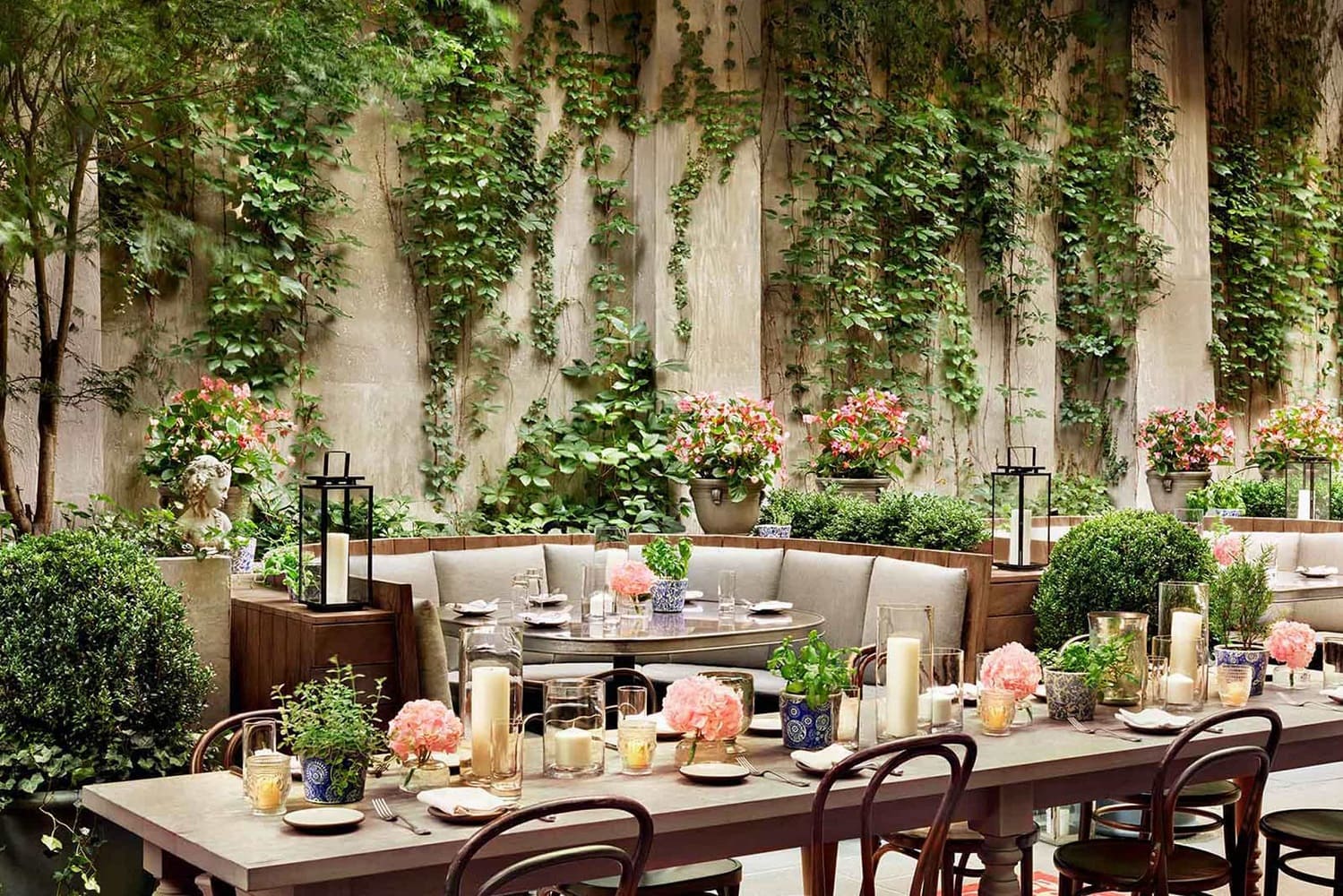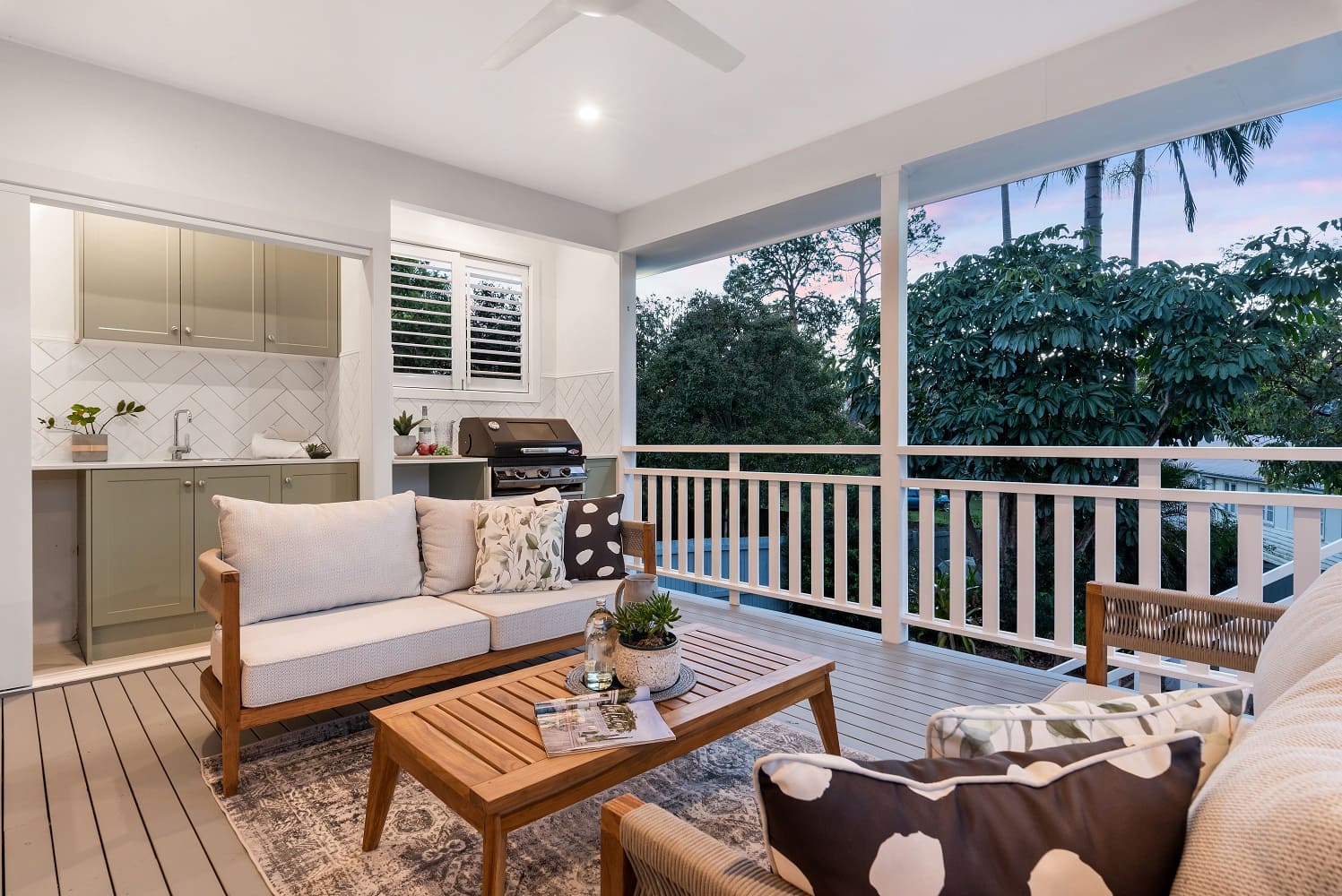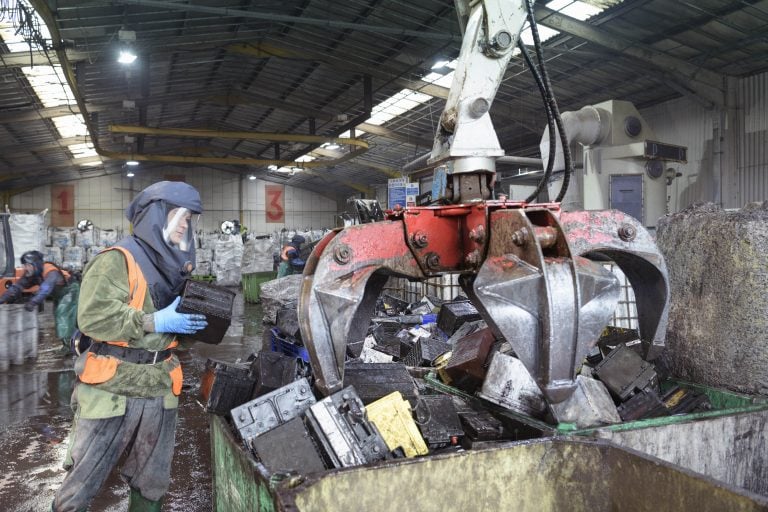Trends in Luxury Outdoor Furniture: Embracing the Elegance of Solid Wood

Table of Contents
In recent years, the concept of outdoor spaces has dramatically evolved, particularly in bustling metropolises like New York and Chicago, where the use of outdoor space was historically underappreciated. No longer just an afterthought, these areas have become extensions of the indoor living environment, where aesthetics, comfort and luxury converge. Parallel to this transformation is the growing trend of incorporating bespoke furniture across residential and commercial venues, of which solid wood has become a testament to style and sustainability.
According to the Architect’s Newspaper, wood is one of the cornerstone materials to fight off the climate crisis, and one of the most promising and renewable resources for construction and interior décor. Solid wood provides numerous incentives for designers, manufacturers, and owners, and indeed a durable and aesthetic way of furnishing an outdoor area. But what exactly are these incentives, and how do they align with industry trends at large?
The Rising Popularity of Solid Wood in Outdoor Spaces
The trend towards solid wood outdoor furniture is not just a fleeting fashion; it’s a paradigm shift in outdoor décor. This movement is driven by the desire for quality and sustainability, as solid wood offers a robustness and timelessness unmatched by other materials. In the bustling cityscapes, such as New York, where outdoor space is a premium, the choice of solid wood outdoor furniture reflects a commitment to luxury and durability. From elegant dining tables to sophisticated lounge sets, each piece is a testament to the enduring appeal of natural materials.

Some decades ago, American walnut started to infiltrate interior décor, followed by an array of domestic wood species including maple, oak, cherry and mahogany. The more homeowners got used to wood as an integral furniture material, the more it made sense to bring this aesthetic development to the garden as well.
For this reason, we are seeing a large influx of South American hardwood species that offer incredible technical characteristics, mostly with regards to resistance to moisture, insects, rot and decay. These include Tigerwood (Goncalo Alves), Ipe (Brazilian Walnut), and Garapa (Brazilian Ash). Black Locust, which is also an impressive hardwood, is increasingly used for the manufacturing of outdoor wooden furniture. This tree is domestic to the southeastern United States, and is a preferred choice not only for outdoor lounge furniture, but also for decking, and other structures that are heavily exposed to the elements.
Crafting Experiences with Luxury Outdoor Furniture
Luxury outdoor furniture is now synonymous with creating bespoke living experiences. In an era where outdoor spaces are considered extensions of the home, certain items speak volumes about one’s taste and lifestyle. High-end outdoor lounges, for instance, are designed not just for comfort but as style statements, mirroring the sophistication of indoor furnishings.
Most homeowners prefer large statement pieces that complement the exterior, with exceptional seating comfort and ergonomic design. This is why reputable manufacturers integrate durable upholstery that further emphasizes the natural and luxurious look of their furniture. Offering a tactile experience through organic fabrics and sufficiently comfortable padding, outdoor models can often outcompete their indoor counterparts.
Customization is Becoming the New Norm in Outdoor Furniture Design

The growing demand for custom-made outdoor furniture marks a shift towards more personal and unique outdoor spaces. This trend caters to the desire for individual expression in outdoor décor, as well as the spatial requirements of real estate. Clients now have the opportunity to be involved in the design process, choosing everything from the type of solid wood to specific finishes and dimensions. This bespoke approach ensures that each piece of furniture is not just a functional item but a personal statement, reflecting the unique preferences and styles of its owner.
The trend marks a notable shift in demand, moving the focus away from retail vendors and rewarding bespoke manufacturers that incorporate old-world craftsmanship. Difficult to scale, their products represent luxurious status symbols that guarantee durability, style and function.
Sustainable and Weather Resistant Furniture as Key Criteria
In designing outdoor spaces, the consideration of weather resistance has become crucial. Solid wood outdoor furniture, renowned for its resilience, is increasingly treated with advanced techniques to enhance its weather-resistant qualities. These innovations ensure that the furniture can withstand diverse climatic conditions, from harsh sun to torrential rains, without losing its aesthetic appeal.
This focus on durability ensures that investment in luxury outdoor furniture remains a wise choice for years to come, maintaining its beauty and functionality through the seasons.
However, prominent designers are latching onto this trend to bring even more materials into the equation without sacrificing the durability of their models. Such materials tend to be eco-friendly, as to satisfy another current that is sweeping over the industry at large.
Organic cotton canvas, for example, is a heavy-duty fabric which unlike traditional cotton is grown without the use of harmful pesticides or synthetic fertilizers, making it more environmentally friendly. This fabric is known for its breathability and comfort. For outdoor use, it’s often treated with water-repellent and mildew-resistant coatings to enhance durability and resistance to the elements. Hemp, bamboo and wool are equally attractive options.
A New Era of Outdoor Furniture
As we advance, the importance of trends in luxury outdoor furniture, especially solid wood, will continue to grow, shaping the future of outdoor living spaces. These trends reflect a deeper understanding of the relationship between indoor and outdoor environments, emphasizing sustainability, personalization, and resilience.
Solid wood outdoor furniture, in particular, stands as a symbol of this evolution, combining the elegance of natural materials with the demands of modern living. As these design concepts evolve, they promise to redefine our perception of outdoor areas, turning them into sophisticated, comfortable, and enduring extensions of our homes.






